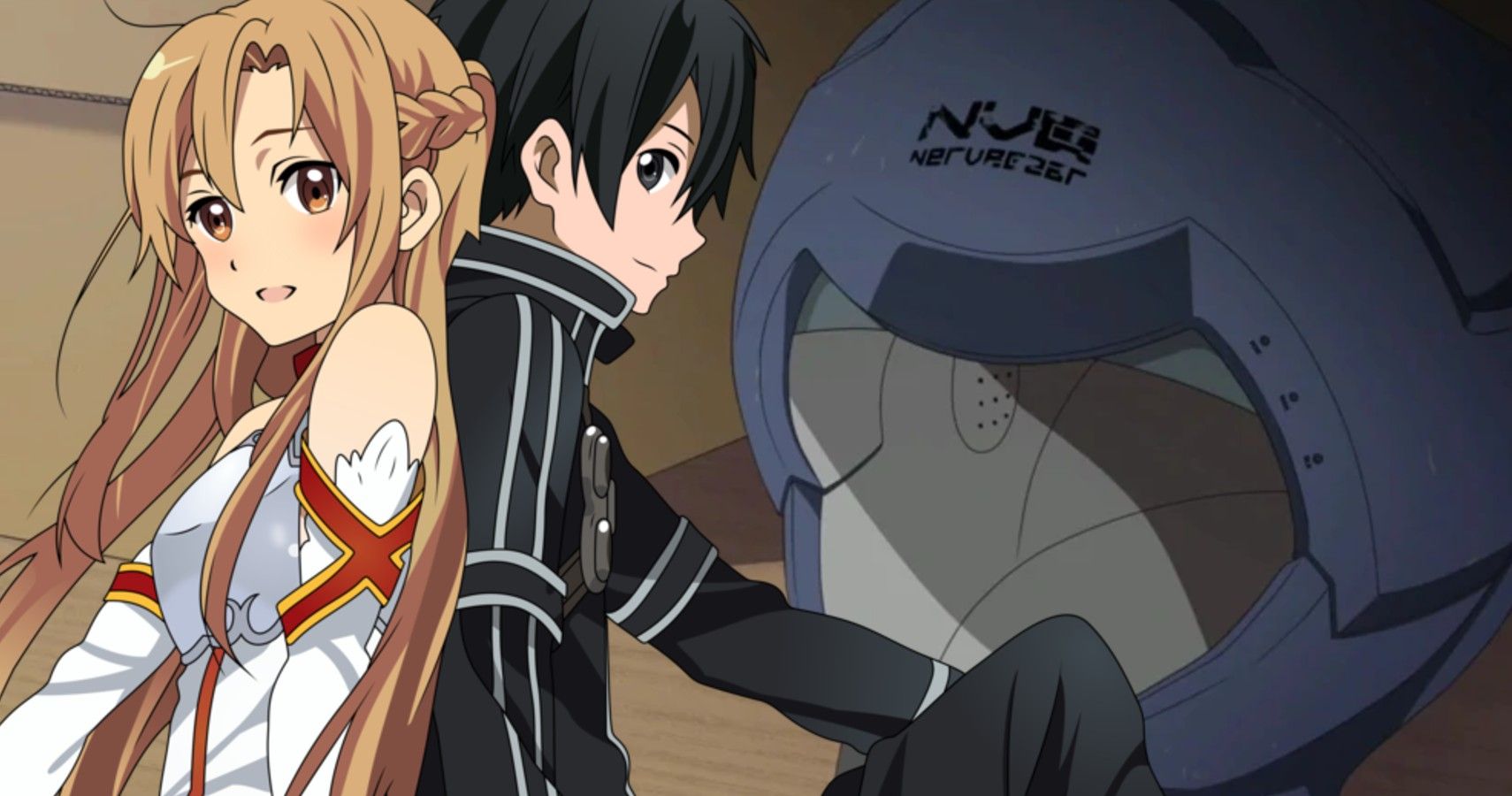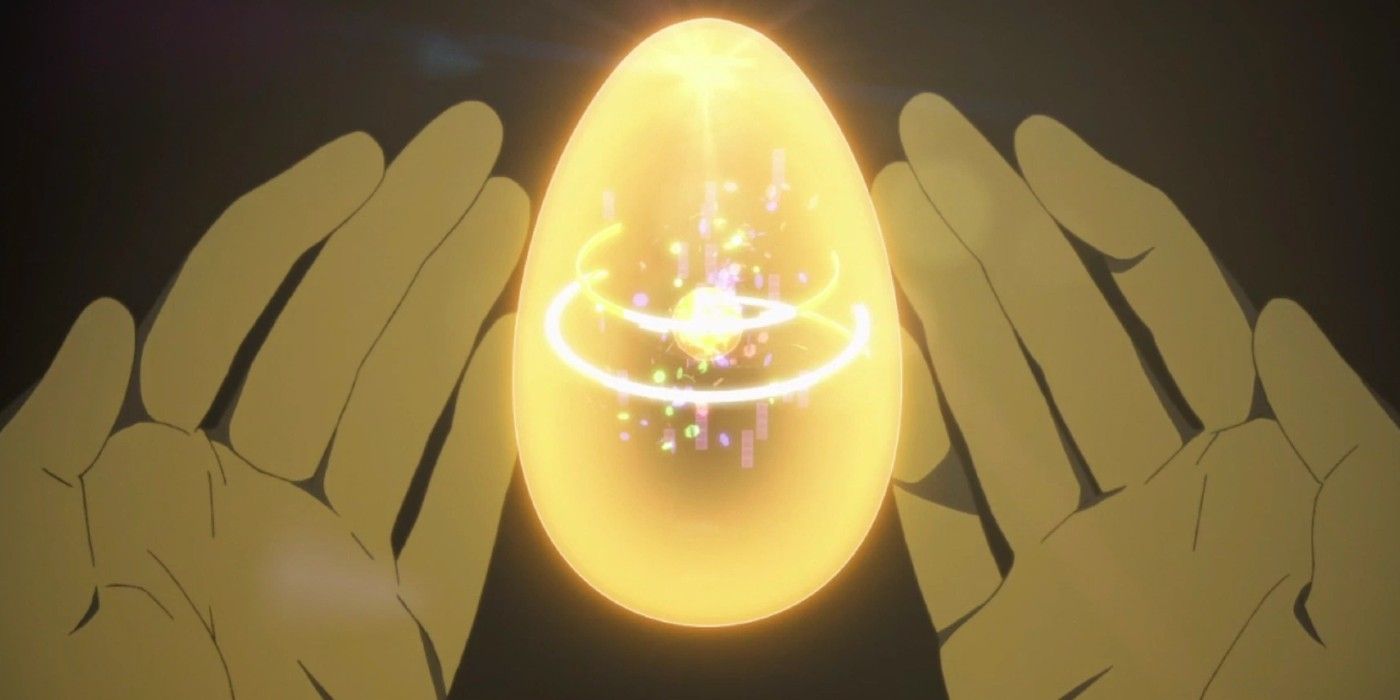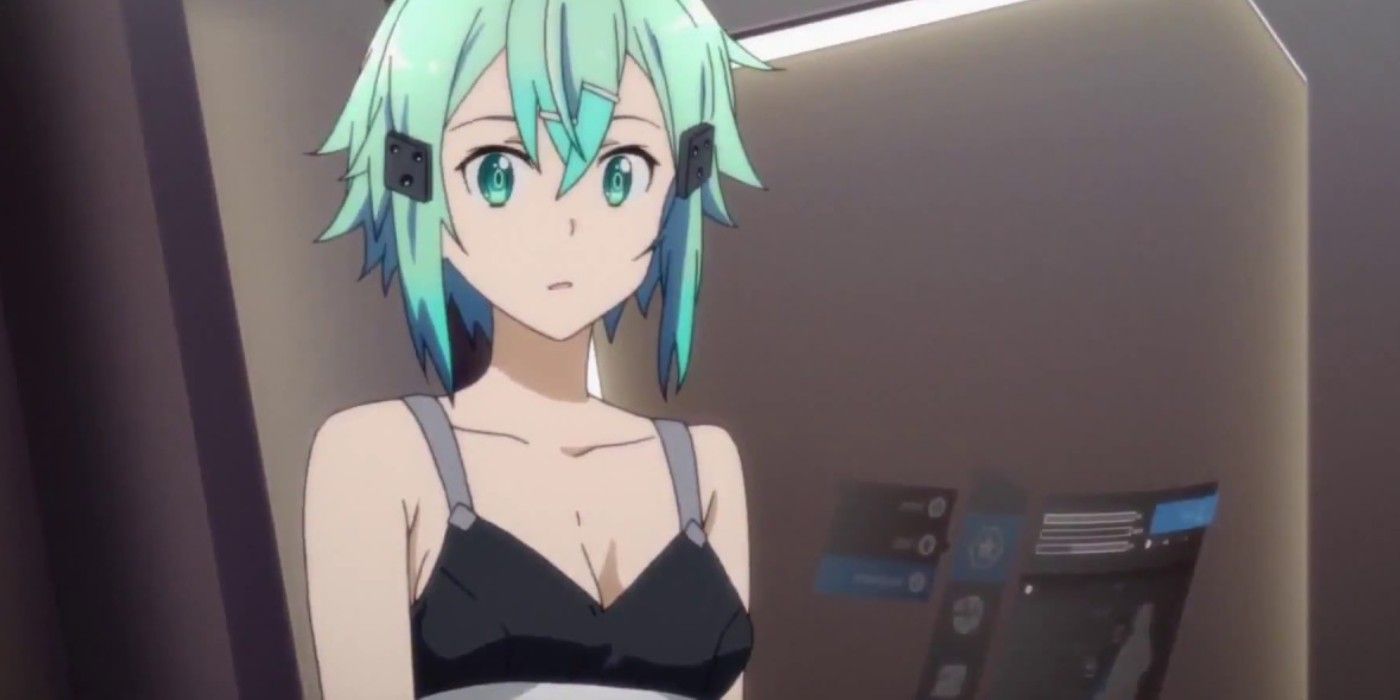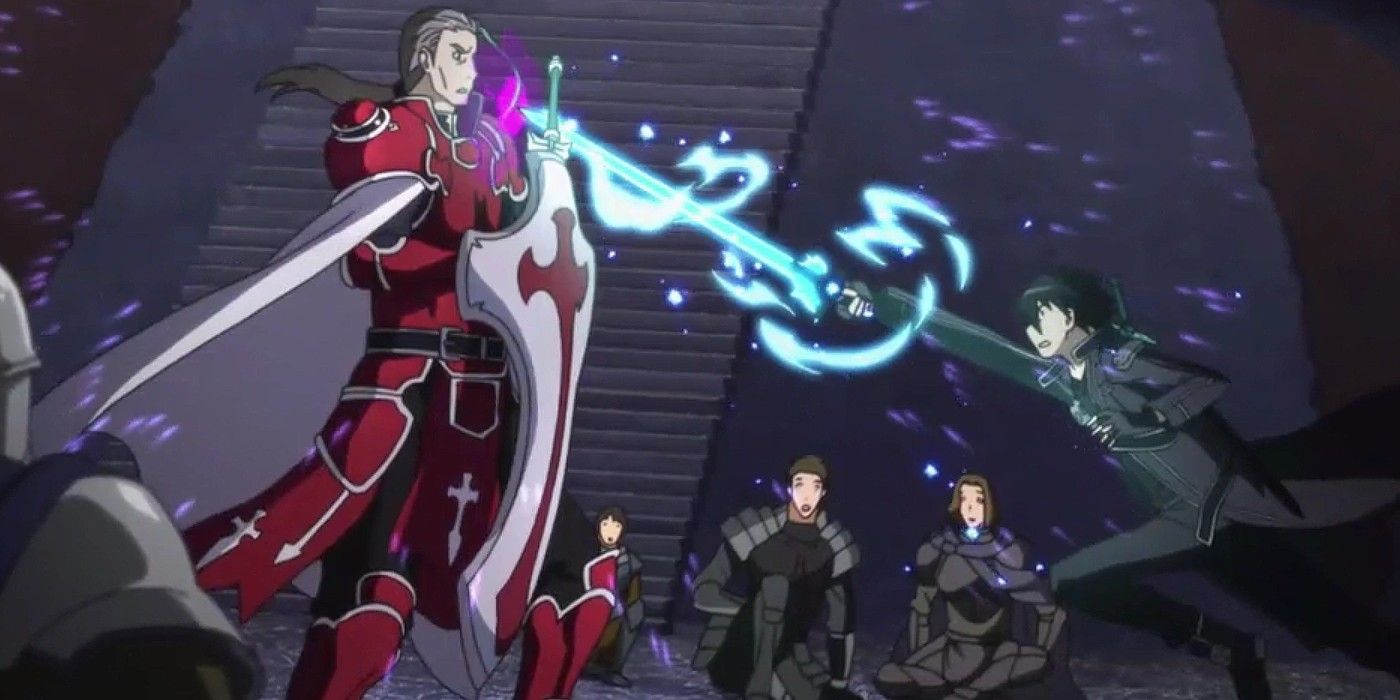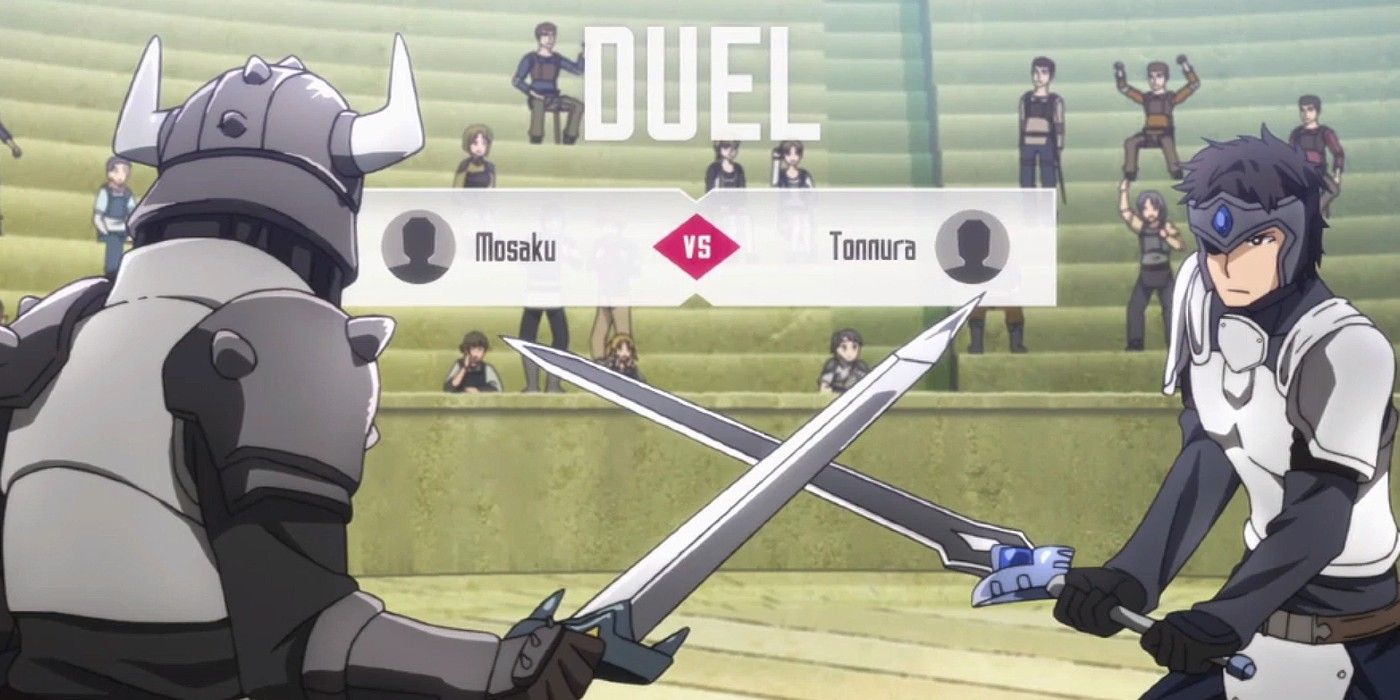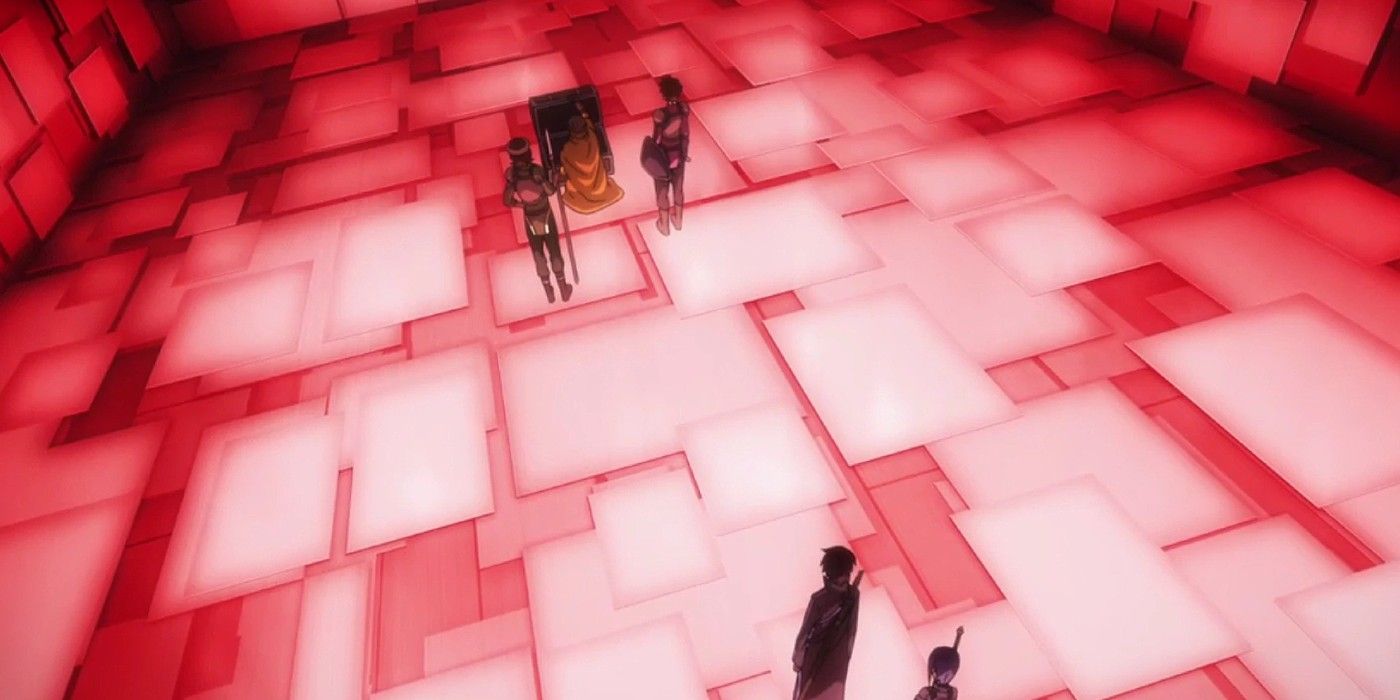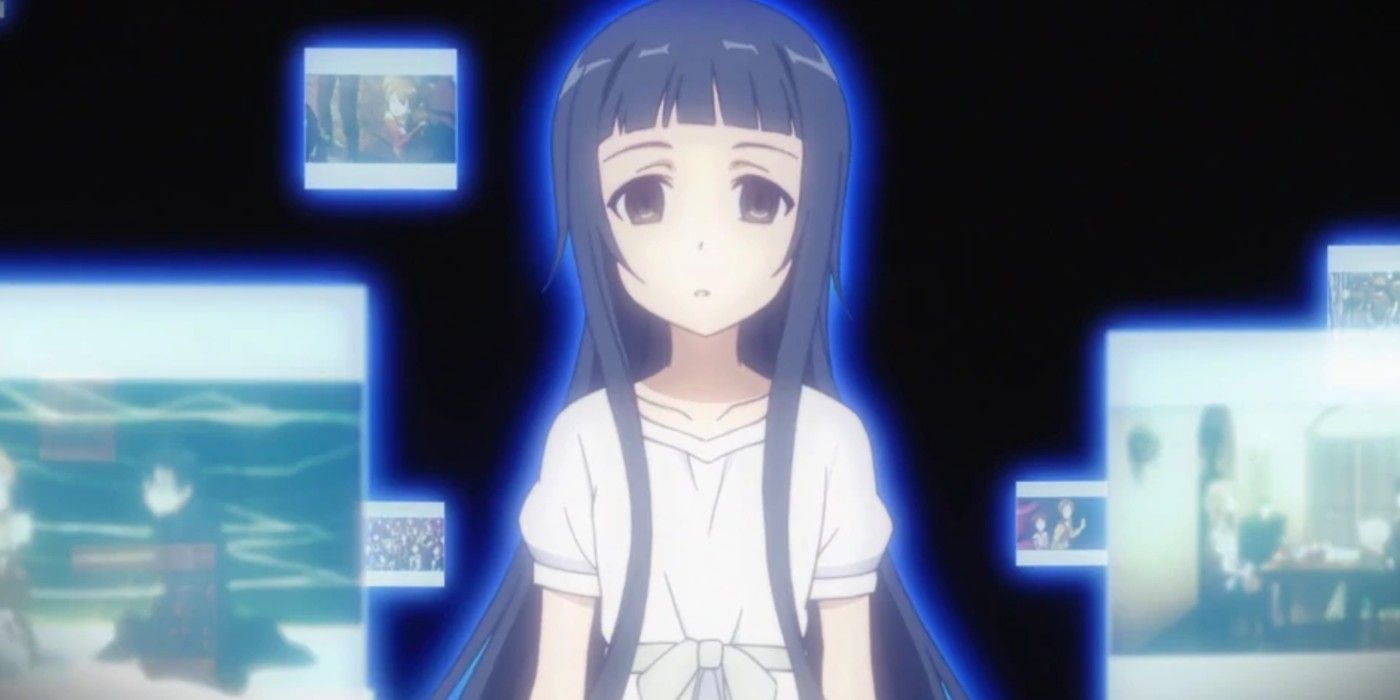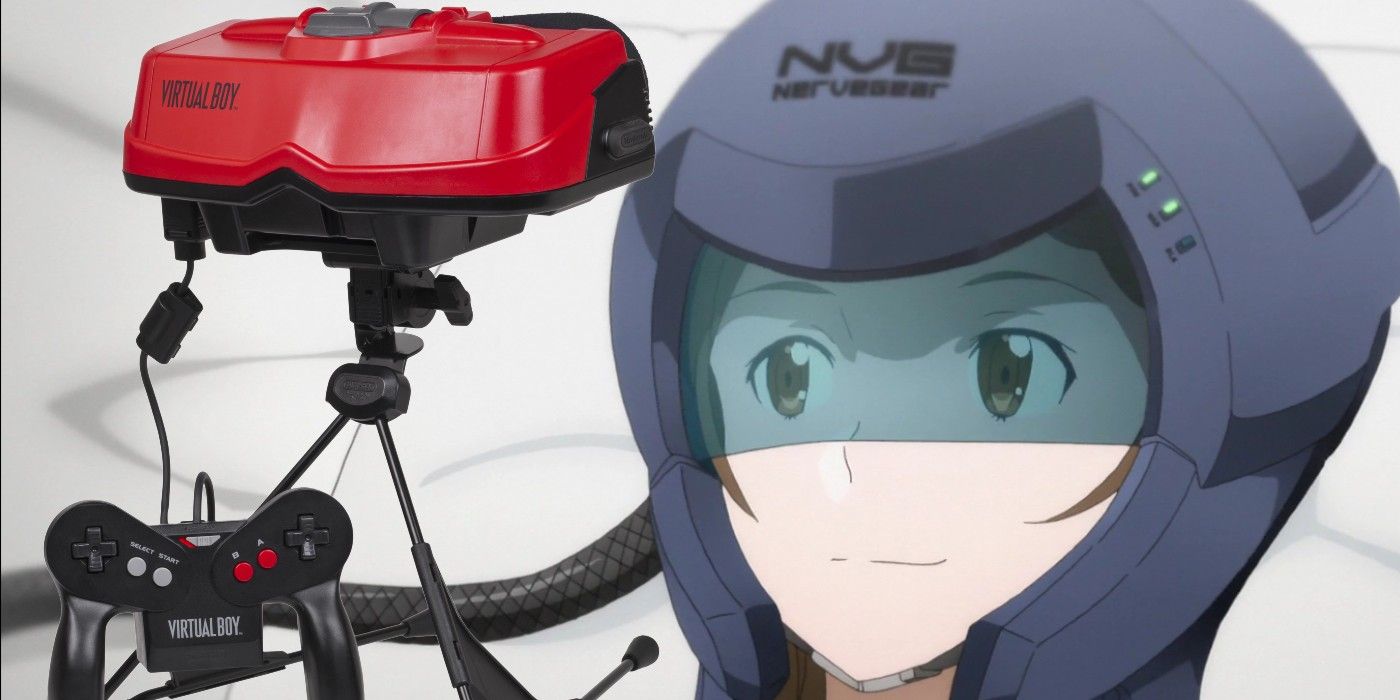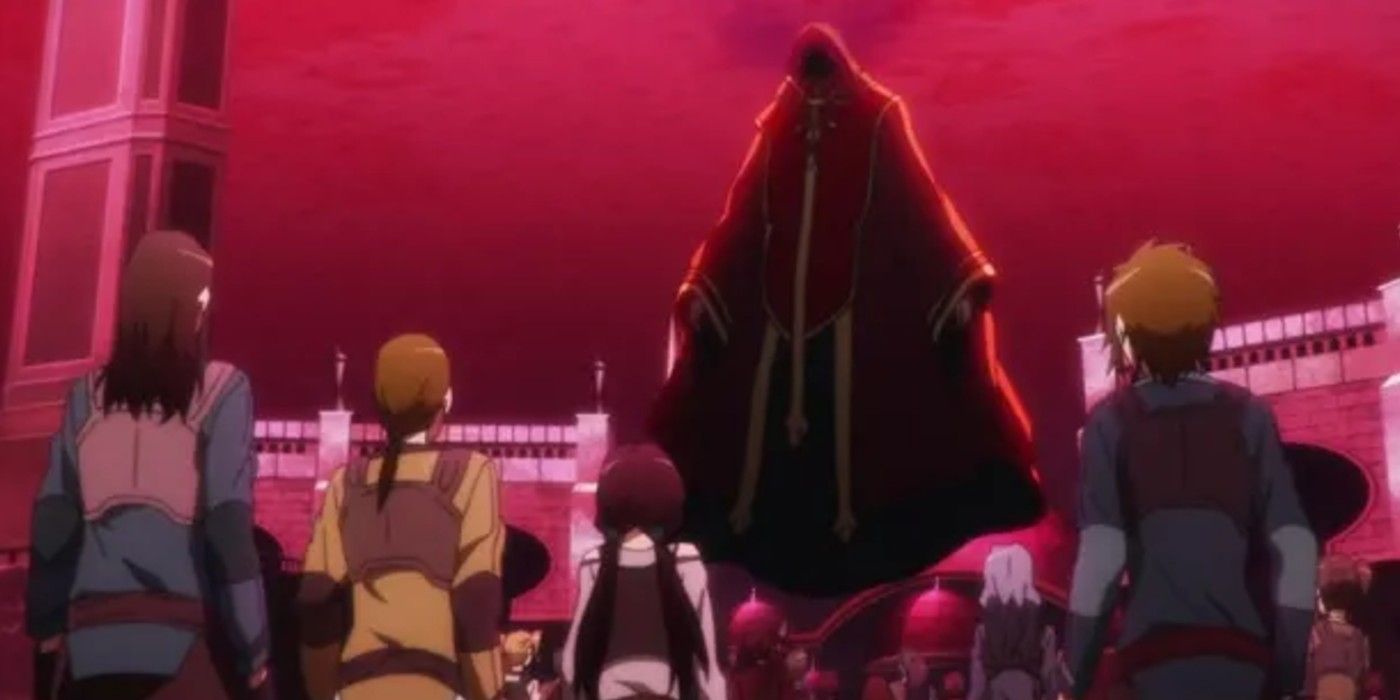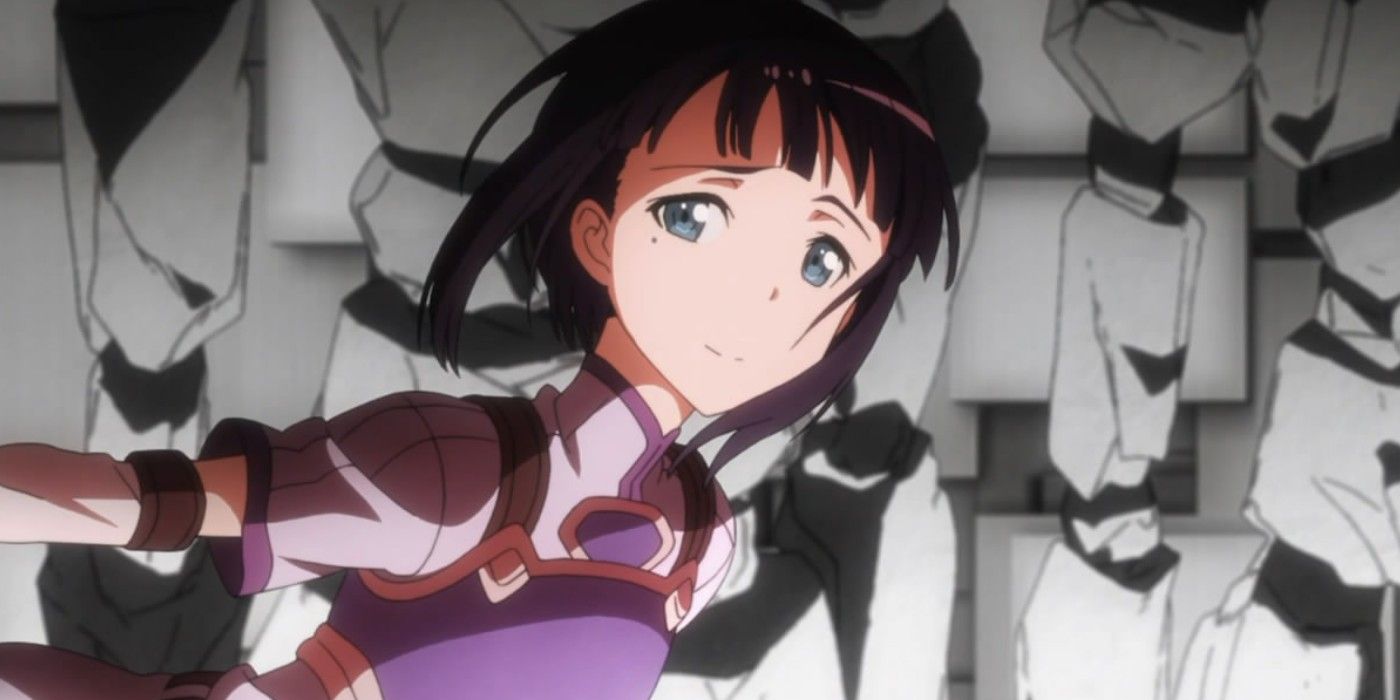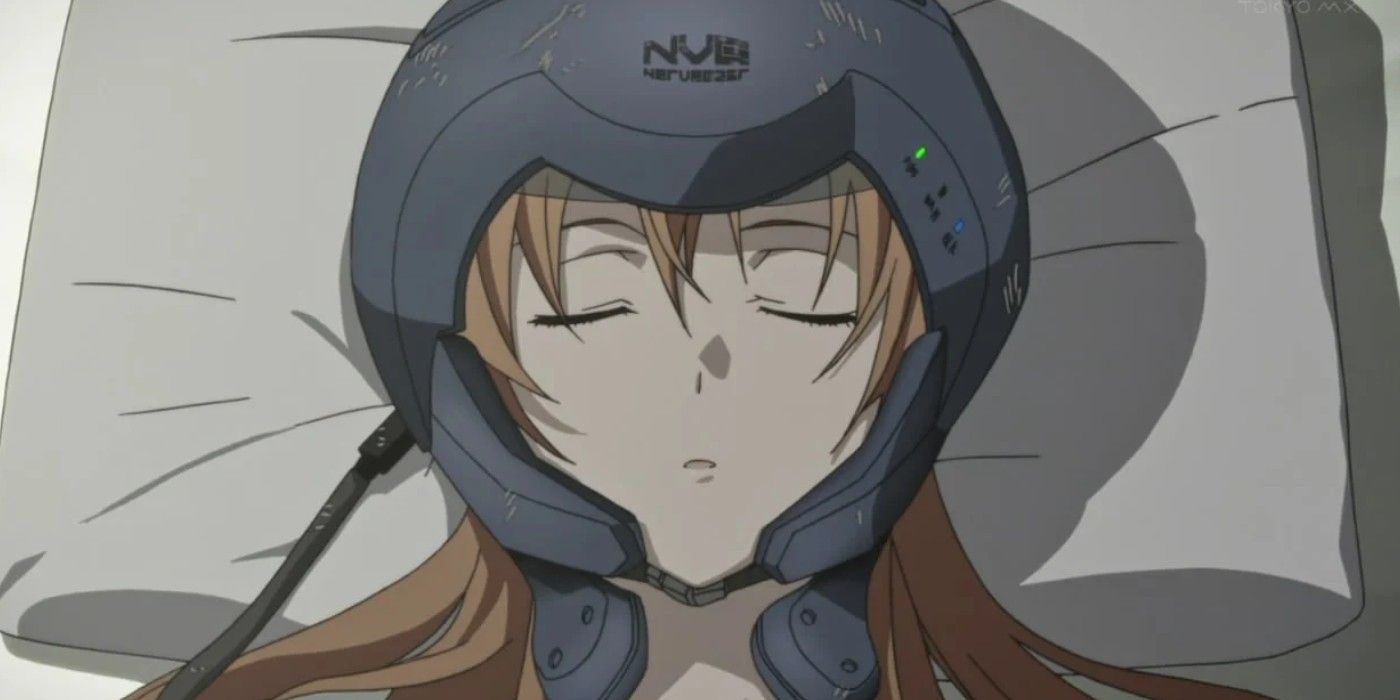While not the worst or most offensive isekai anime out there, Sword Art Online is equal parts controversial and polarizing, to say the least. This stems from a lot of things, with its central game arguably being the least of its worries. That’s not to say it’s safe from a good interrogation, though.
In-universe, the titular SAO is a Virtual Reality Massively Multiplayer Online Role Playing Game (or VRMMORPG) that can only be played by using the advanced VR console known as the NerveGear. Once plugged in, players enter a world full of adventure, death, and nonsensical things that will bug literally anyone who’s ever played a video game.
10 Copyright Laws Would Be A Nightmare
At the anime’s end, Kirito is gifted The Seed which, in brief, is SAO's game engine. This allows anyone to make any VR world they want, so Kirito shares this knowledge to the world by uploading it for free online. Thing is, Argus (SAO's original publishers) never allowed this. Outside of the game world, this would lead to copyright lawsuits of such magnitude that would render many succeeding events impossible.
The Seed was made using SAO assets, meaning VR worlds made using it are infringing on copyrights of the game’s current owners, Ymir. Yet somehow, Ymir’s direct competitor – the Augma VR device –recycled SAO assets like boss monsters and skins. Not only would Ymir have stopped the Augma game Ordinal Scale from doing this, but the sheer amount of controversy of recycling assets from the SAO Incident would’ve stopped the game from existing at all.
9 The User Interface Is Clunky
SAO’s UI isn’t terrible as it’s impractical for RPGs. One would think the NerveGear’s advanced thought-based interface would’ve done away with these nitpicks, but apparently the developers retained them. For one, the drop-down menus are too minimalist, which is a problem for RPG players since they need access to all information and items at any given time. Contrast this with World of Warcraft’s overloaded menus.
Other issues include life bars placed outside the player’s peripherals and in-game menus that can only be accessed through tiresome hand gestures. The weirdest bit is how gear is equipped and otherwise, as SAO requires the player to strip down to their underwear. Not only is this tedious, it’s a thinly-veiled excuse for cheap fanservice.
8 DPS Is The Only Playable Class
One of the most basic things about RPGs is that class diversity is a must. For every DPS (Damage Per Second) attacker, there’s a Tank who’ll play defense and a Healer keeping everyone alive. But despite being an RPG, SAO apparently missed this memo because literally every player is a DPS fighter, with no option to choose anything else.
Medics are practically non-existent, with healing delegated to whatever medicinal potions Kirito and everyone else have on hand. What few Tanks are there are just DPS guys with shields, not designated defensive characters. How SAO would attract a dedicated playerbase is a mystery, considering that it specifically caters to just one third of the RPG community.
7 There’s No Leveling Balance
One of SAO’s biggest faults as a game is that there’s simply no in-game balance. Player-Vs-Player (PVP) fights can happen literally anytime, allowing for overpowered players to relentlessly bully newbies for a level-up. This is why real-life MMO RPGs only allow PVPs through invites that a low leveled player can opt out of, just to keep things fair.
This imbalance is worse in ALfheim Online (ALO) and Gun Gale Online (GGO), since ALO’s class/race system gives certain players an unfair advantage from the moment they pick a character. Likewise, GGO has a stat system that if properly exploited, effectively turns a player into an unstoppable gunslinger. If real players bumped into someone as impossibly god-tier as Kirito, they would just quit the game and never come back.
6 Anti-Crystal Zones Are Terrible Game Design
In SAO, crystals are an important resource that allows players to heal and teleport in the midst of battle. These are effectively useless in the dungeon’s Anti-Crystal Zones which, as the name suggests, forbids crystals in a room filled with enemies. Not only is this dangerous, but it’s stupidly unfair.
The only way to trigger the Anti-Crystal Zone is by accident since a player has to open a rigged treasure chest first. This not only discourages future exploration, but punishes players for literally nothing. In short, Anti-Crystal Zones are a bad idea that should never have made it past the development stage.
5 Apparently, Only Kirito Can Access The Source Code
One of the most polarizing moments in Sword Art Online sees Kirito defy death by accessing the game’s source code to keep Yui alive. Aside from this effectively nullifying any emotional stakes, this begs the question why Kirito never did this to save everyone trapped in SAO, and why no one else could do it as well.
While the real games industry is still years away from making a NerveGear, SAO is available in a technologically contemporary world like ours. How is it that, in a digital age where player-made mods and cyber-attacks are a gaming norm, absolutely no one but Kirito thought to use SAO’s command prompt? Also, how come nobody got the brainwave to cheat or use bots, when these are commonplace nuisances in today’s online battlefields?
4 SAO & VRMMORPGs Should Be A Financial Bomb
According to the anime, SAO’s initial playerbase is 10,000 players strong, with 200,000 NerveGears sold by the time of the game’s debut. Realistically, SAO flopped worse than Nintendo’s botched Virtual Boy (which sold 770,000 units at best). Despite this and many PR nightmares, SAO and VRMMORPGs are somehow still relevant enough to get spin-offs and revivals.
Contrast this to the eponymous children’s card game in Yu-Gi-Oh!, which ridiculously implausible as it may be, is at least justified in-story as a global phenomenon with the backing of a major multi-billion Dollar corporation. SAO, meanwhile, was a disaster from day one that logically would never have survived.
3 The Deadly NerveGear Was Sold Publicly
If an SAO player dies in-game or tries to forcibly logout, their NerveGear would literally fry their brains. With 10,000 players trapped in the game and more than 200,000 units in circulation, this means that the NerveGear was sold as a deadly weapon – which should be impossible in the anime’s world or any kind of sensible reality.
Even if Heathcliff/Kayaba Akihiko (the game’s creator) was the only one behind the SAO Incident, the fact remains that thousands of deadly NerveGears that were explicitly designed to harm users were sold. How these murderous consoles got past government agencies and safety boards without prompting backlash or recall is more than just a careless oversight, to say the least.
2 Despite A Bodycount, SAO Remains Popular
At best, the SAO Incident trapped and injured thousands of gamers in its world for two years. Officially, 3,853 players died during these events, with half of that number losing their lives in the first month alone. And yet, SAO was popular enough to attract a dedicated fanbase and spawn an entire in-universe franchise.
By all accounts, SAO wouldn’t just be the most hated video game ever but it would kill its franchise, company, and arguably gaming in general. This glaring paradox is barely acknowledged in the anime, where characters excitedly hop onto the next SAO and/or VRMMORPG trend despite everything they went through. Either they have short attention spans, or they have a VR death wish.
1 The NerveGear (Somehow) Kept Users Alive
While the NerveGear is a fictional VR console that can achieve (currently) impossible feats like creating a lifelike and immersive world, one thing it can’t do is keep its players alive for a protracted amount of time. Case in point, the victims of the SAO Incident were basically stuck in comatose for two years.
The NerveGear is just an impressive VR console; it can't support basic bodily functions. How the trapped gamers didn’t suffer from starvation, a gradually weakening immune system, or their respective pre-existing conditions is just glossed over at best. Medically speaking, most of the players would’ve died of natural causes before the story’s halfway point.

